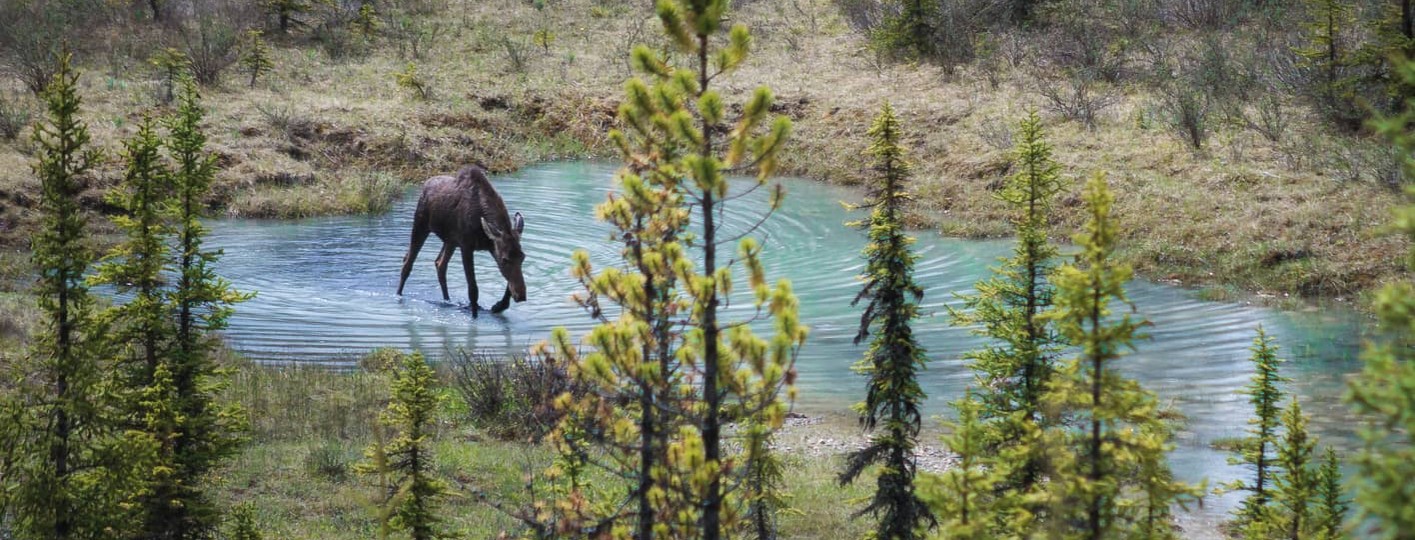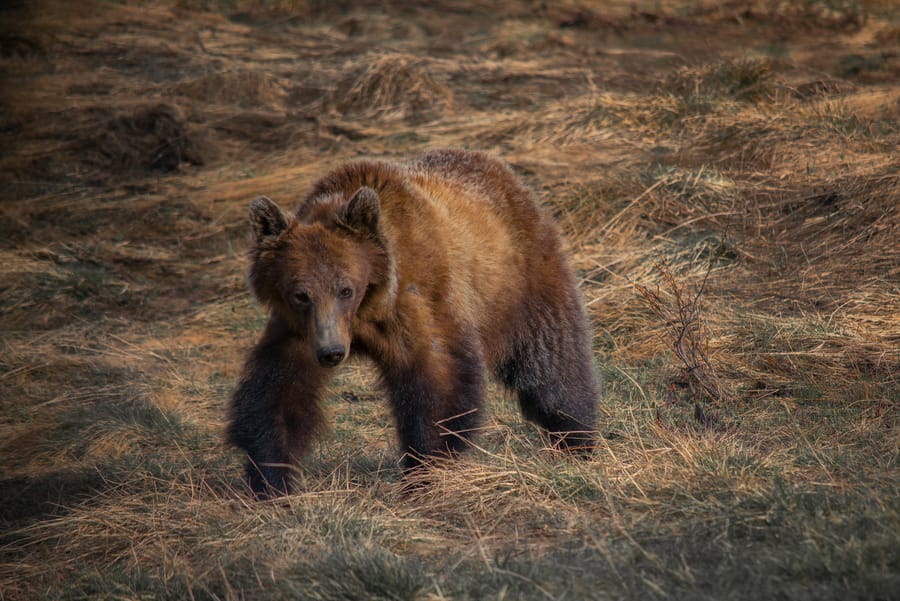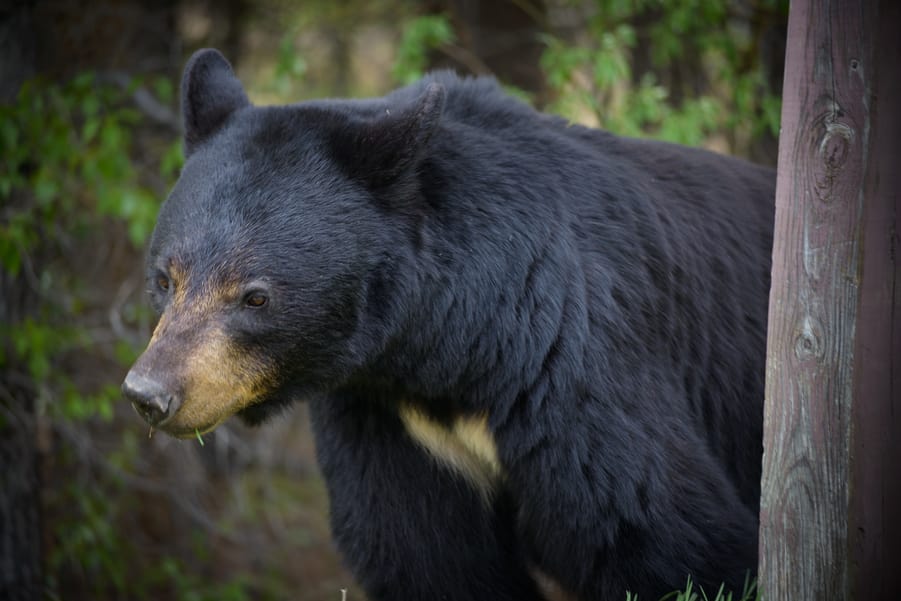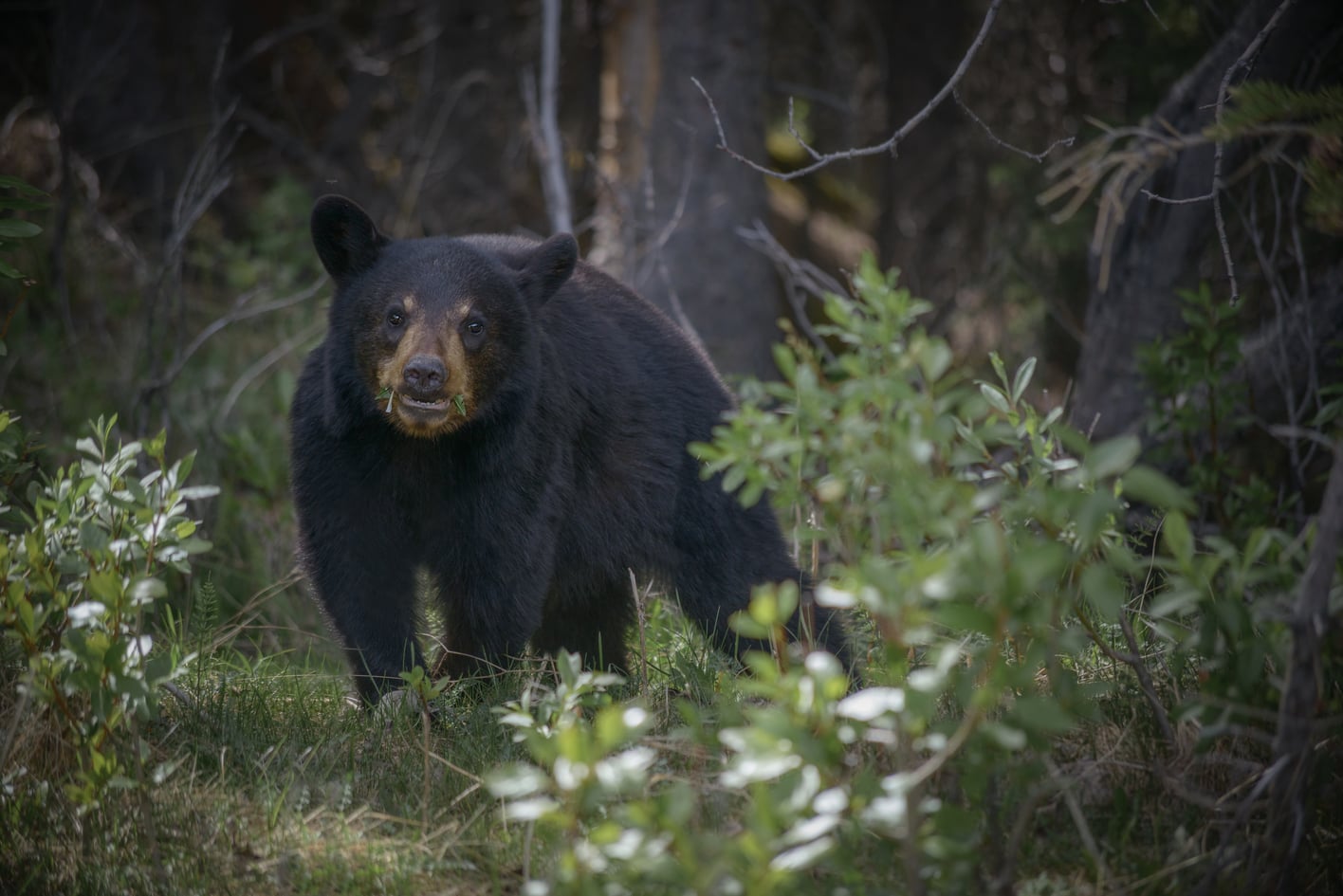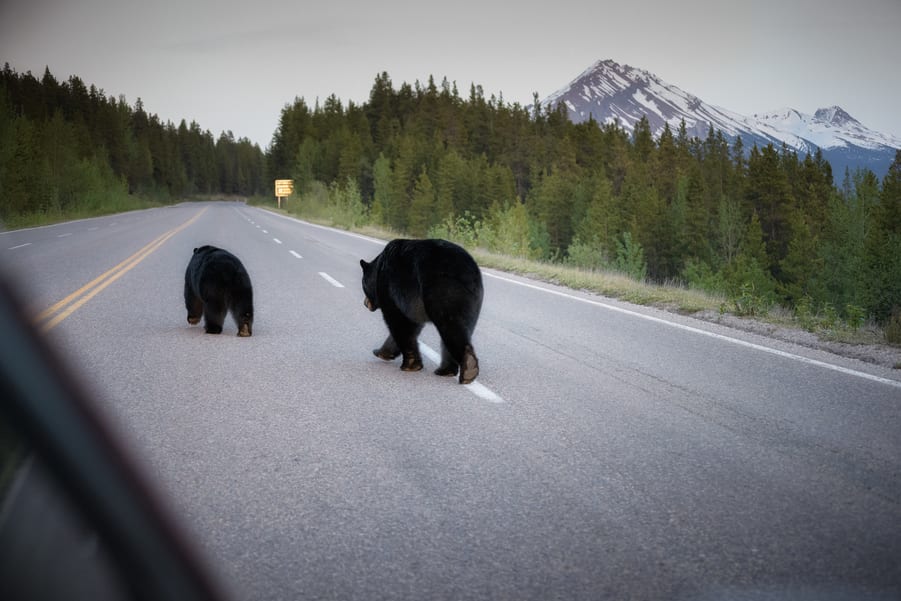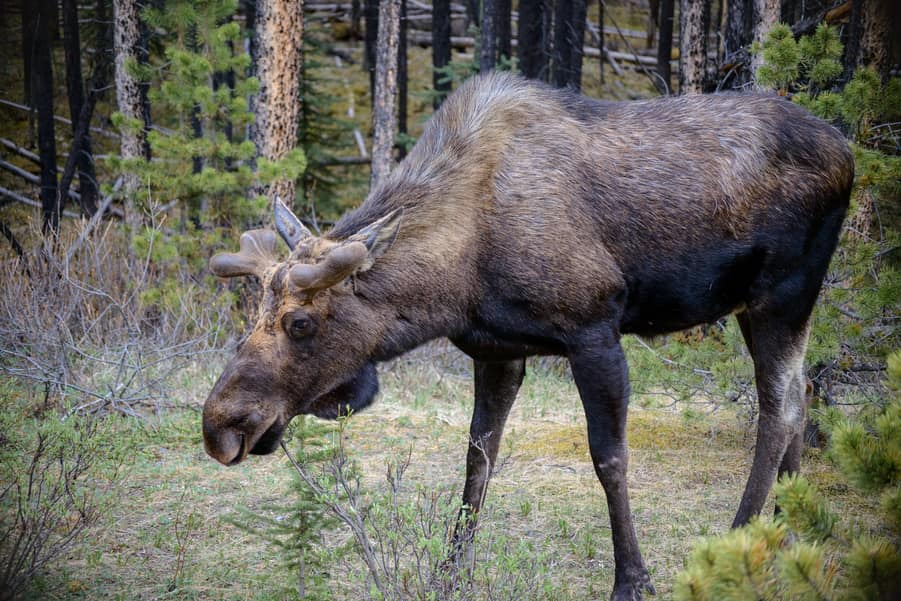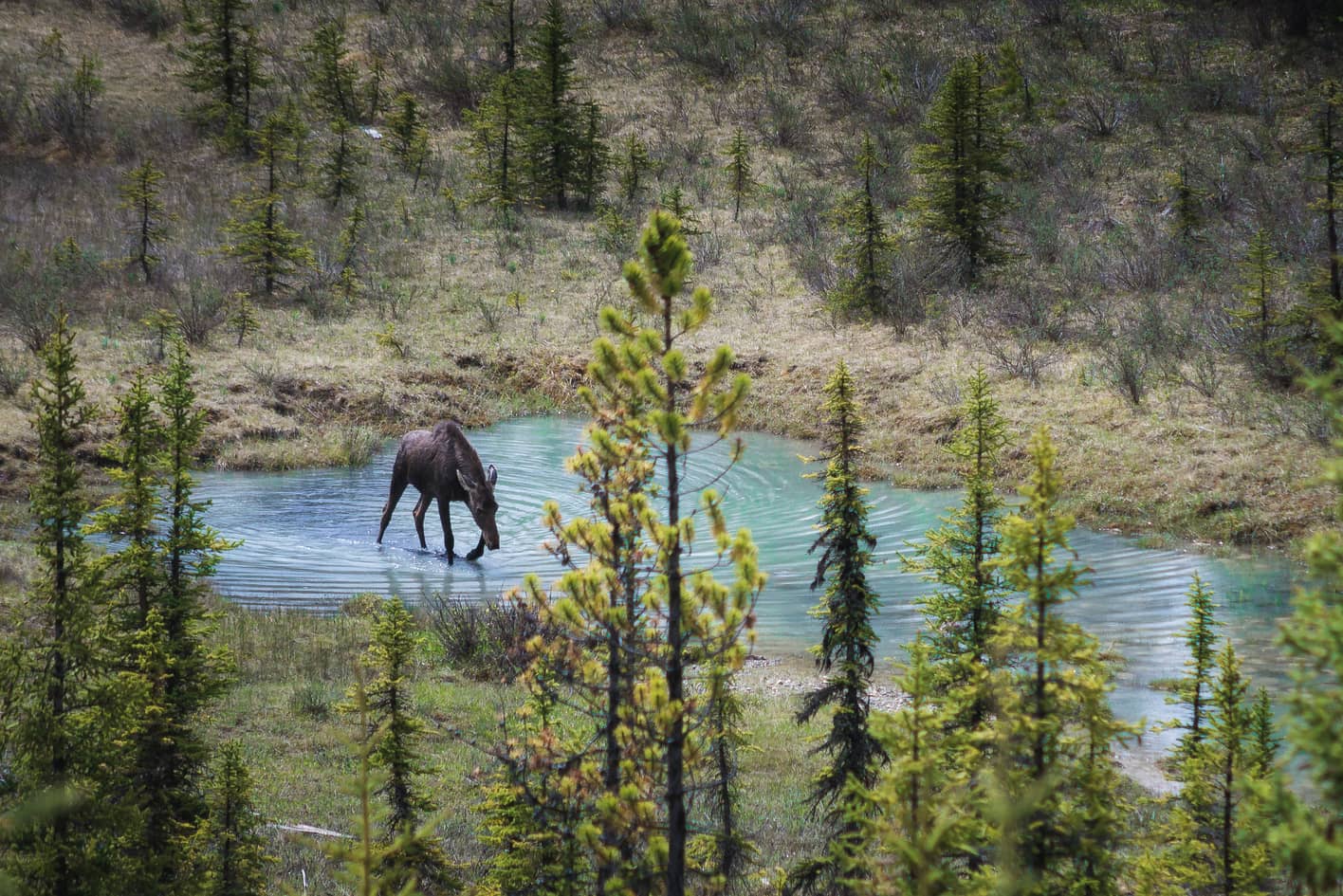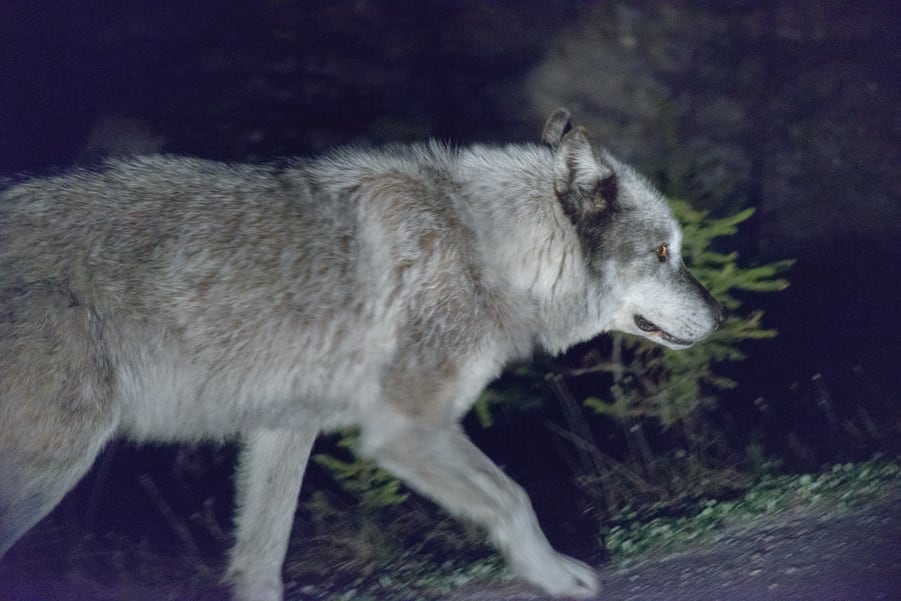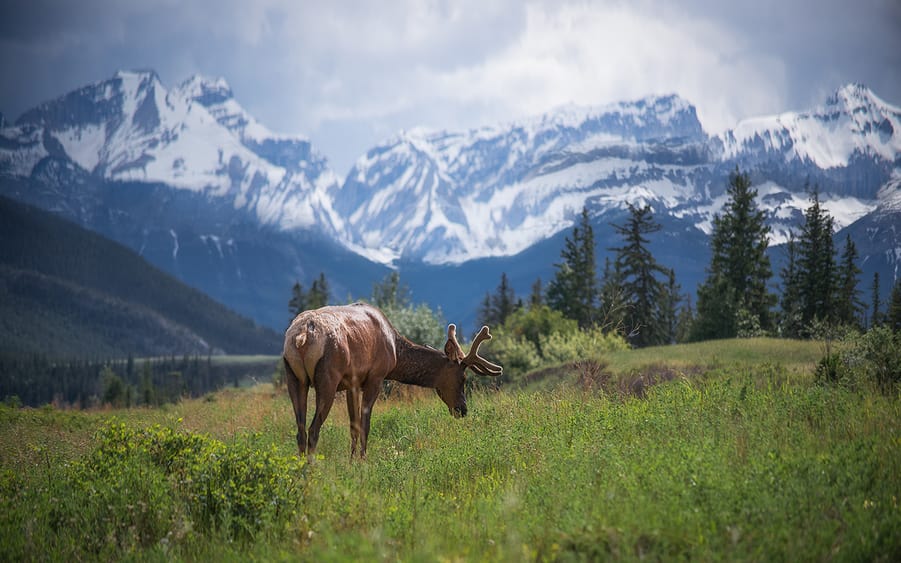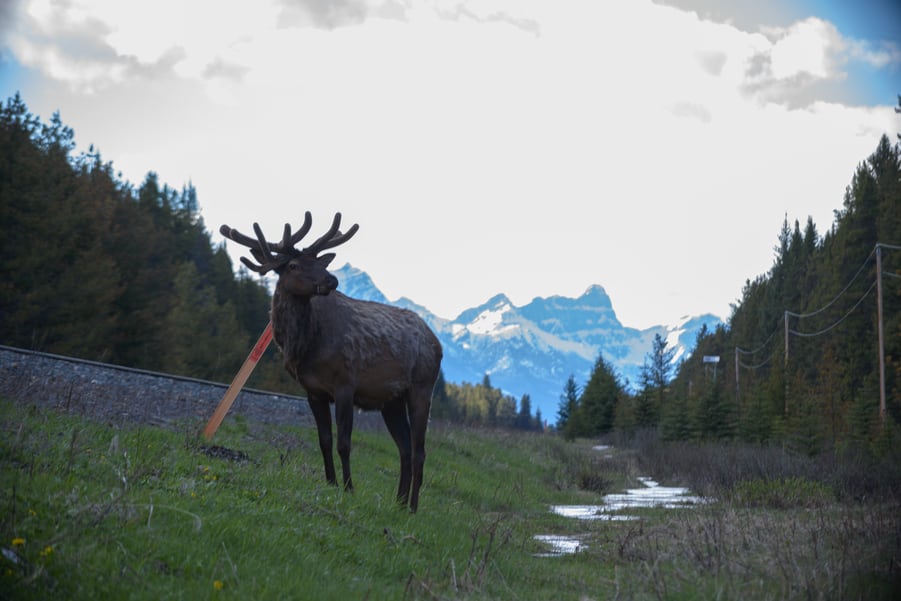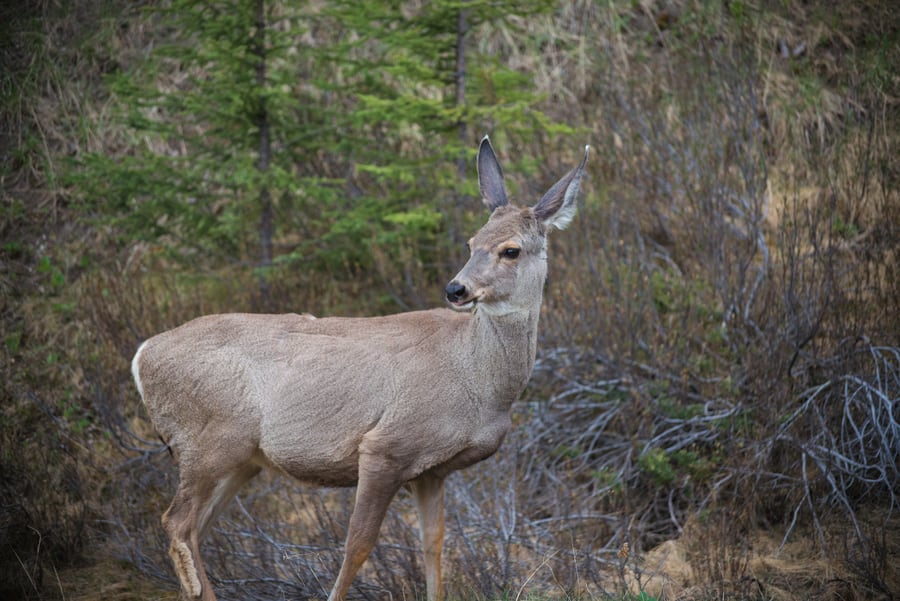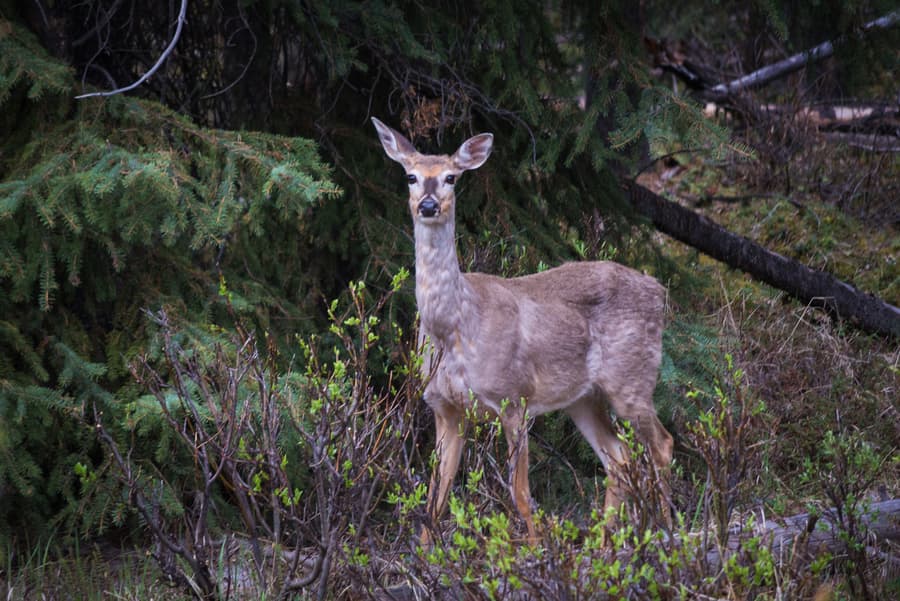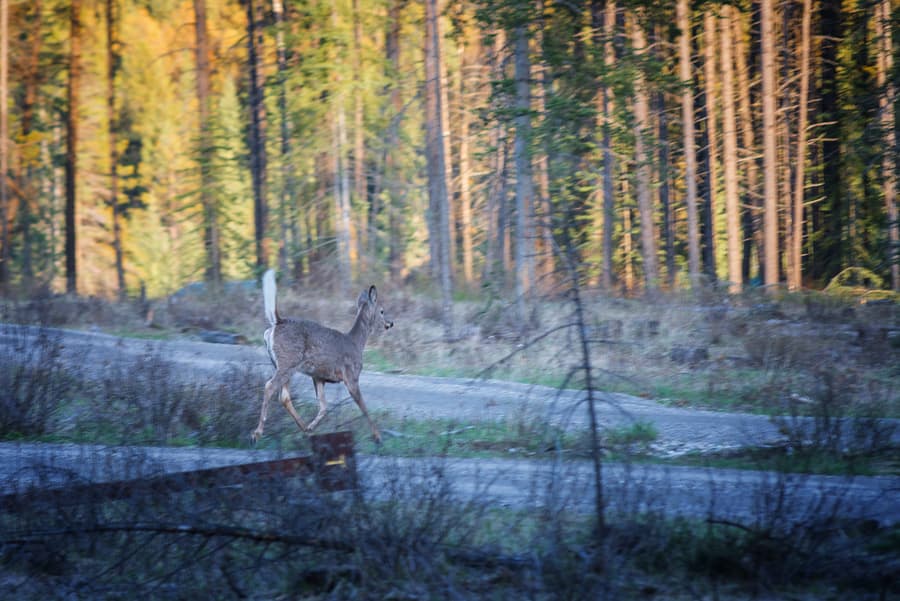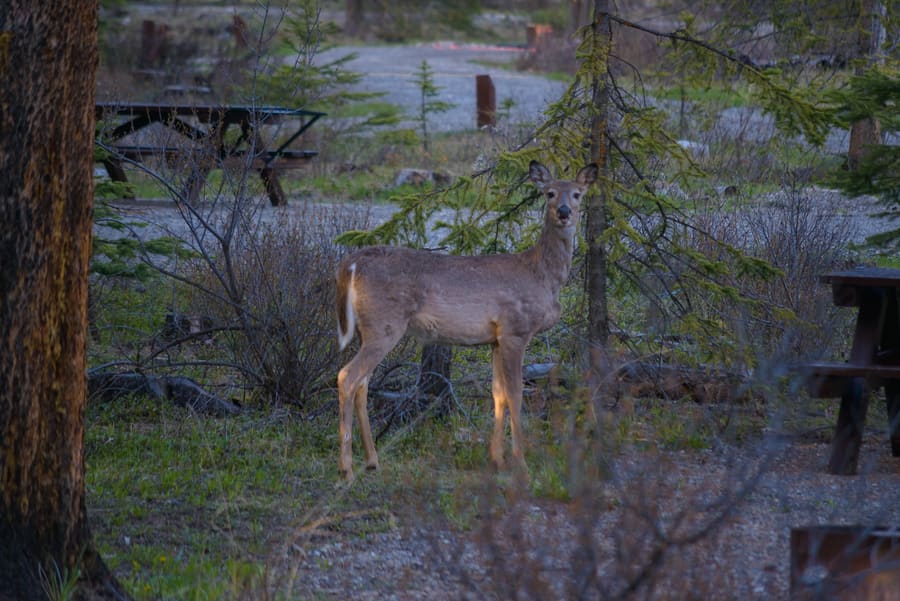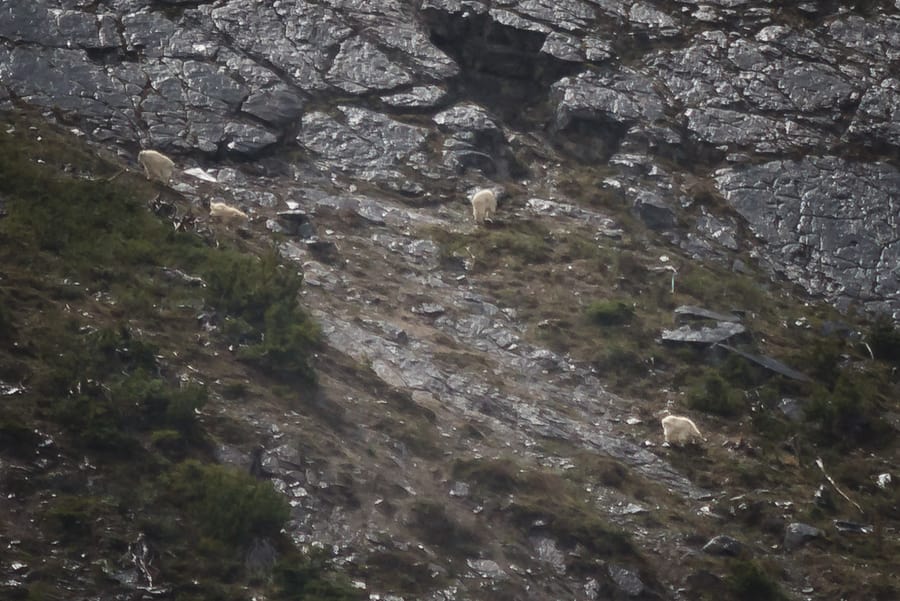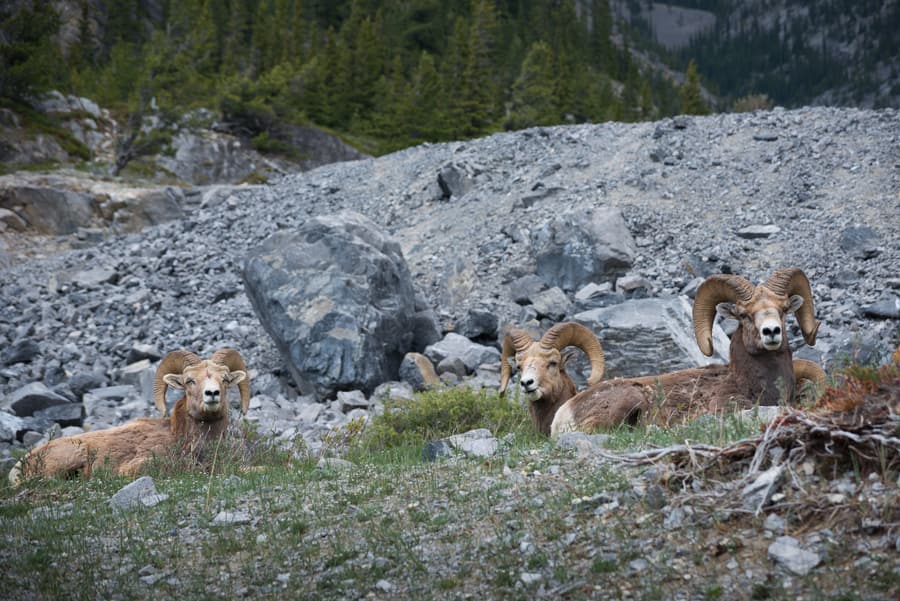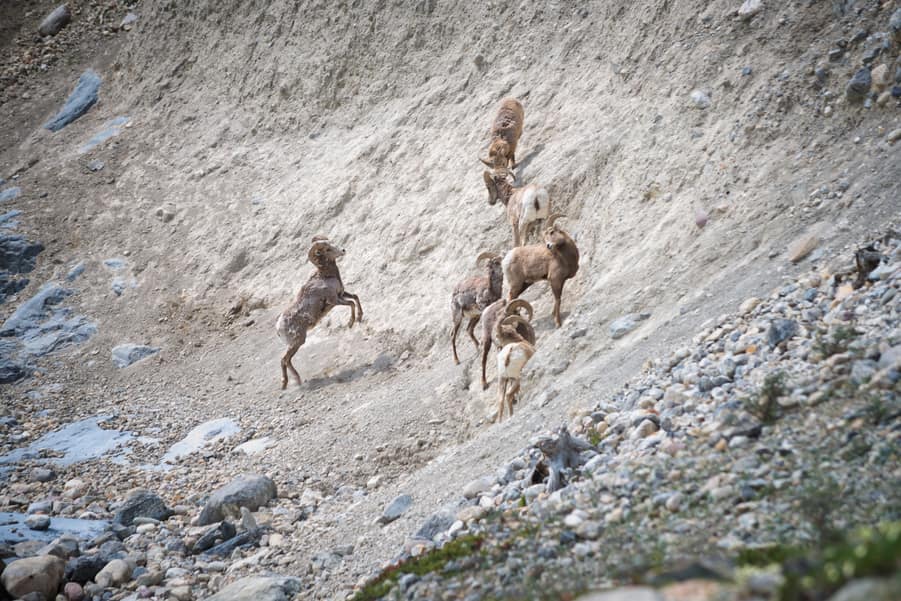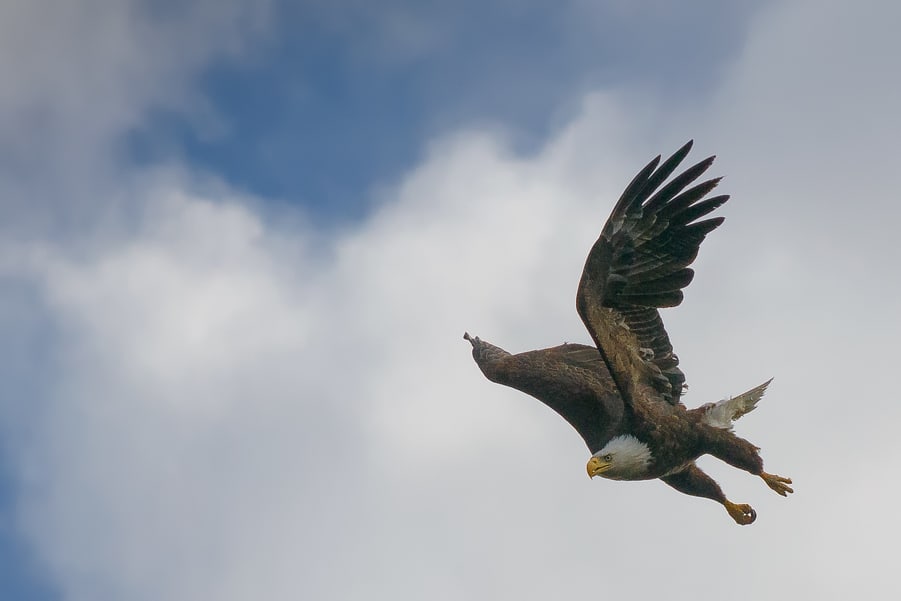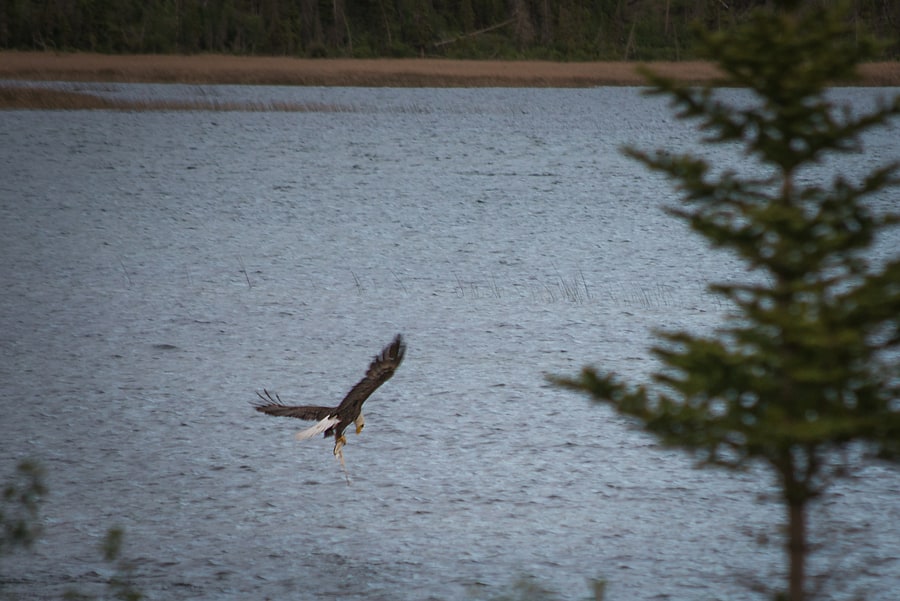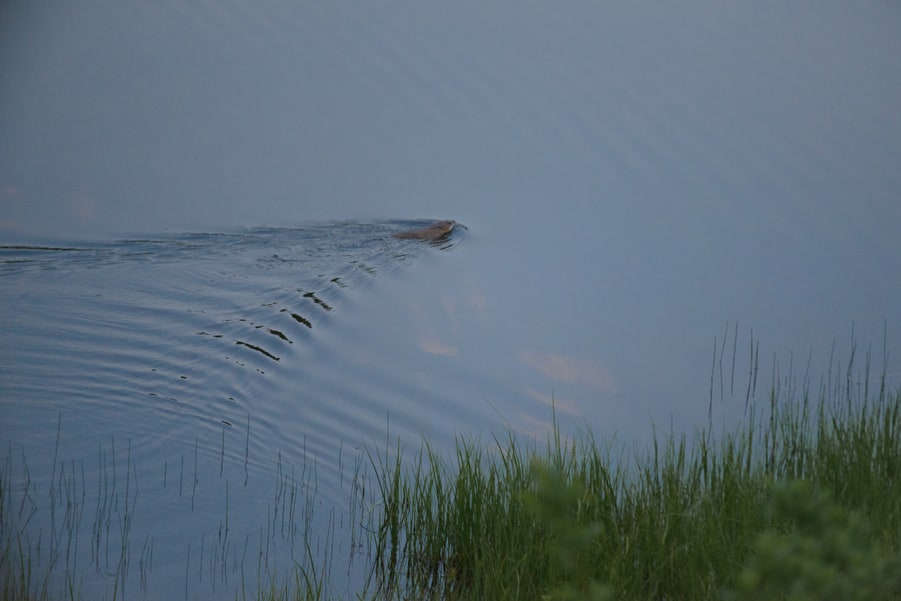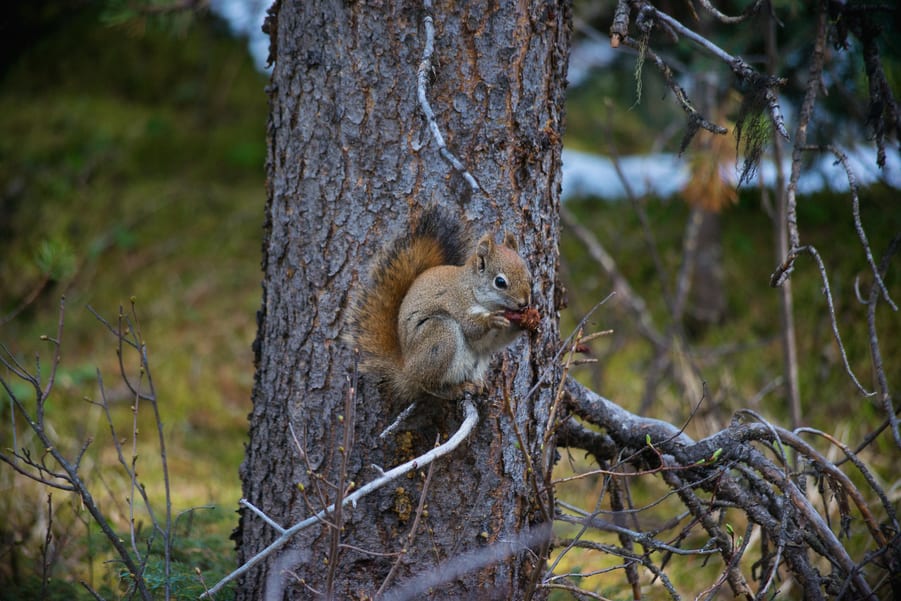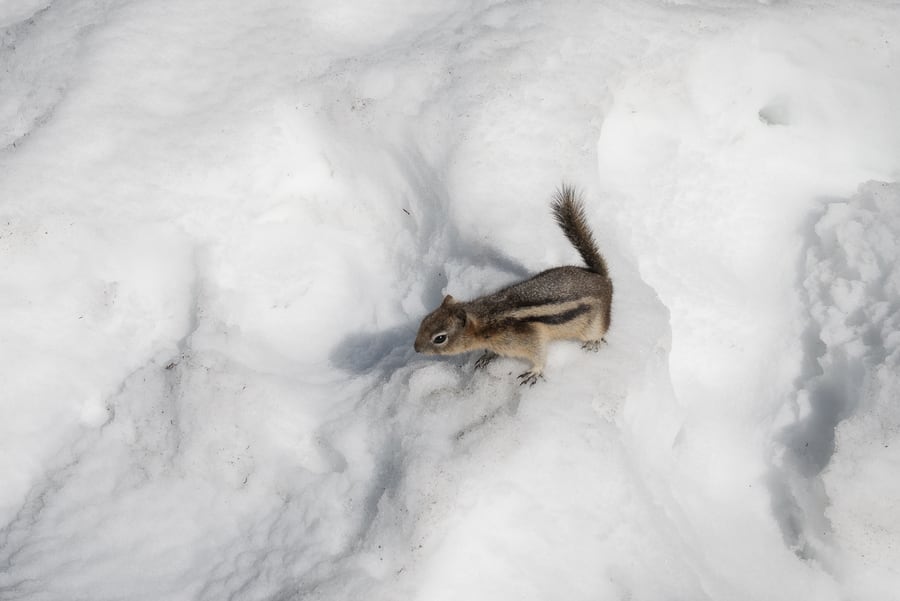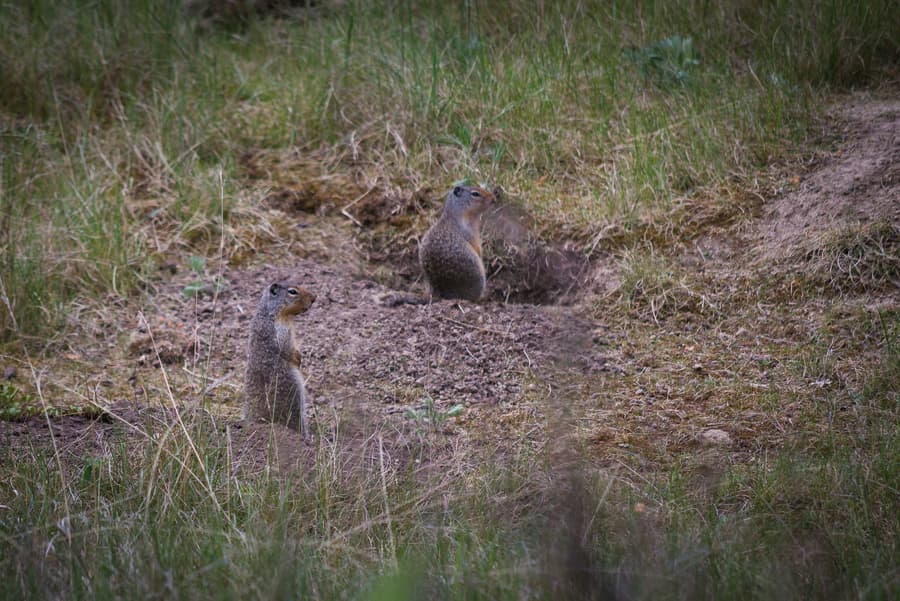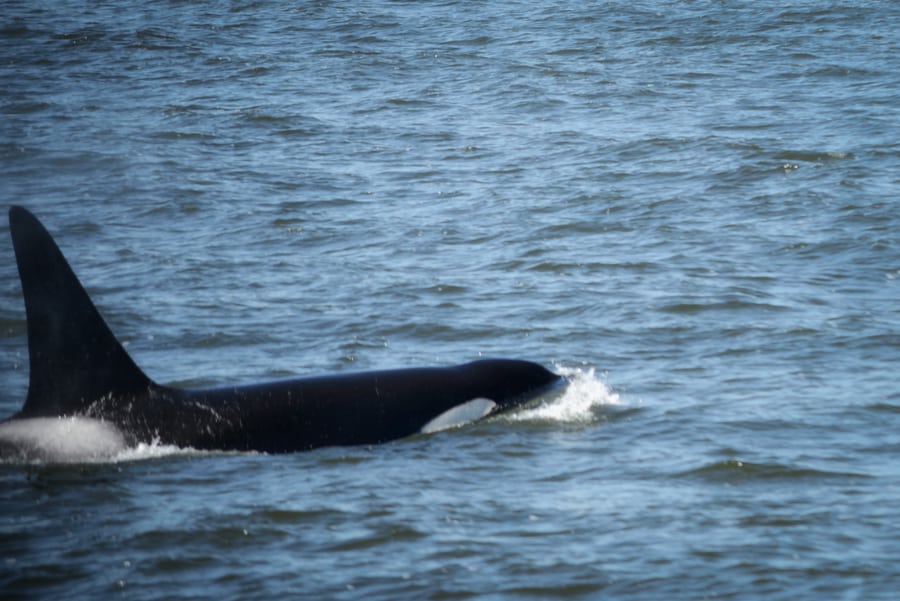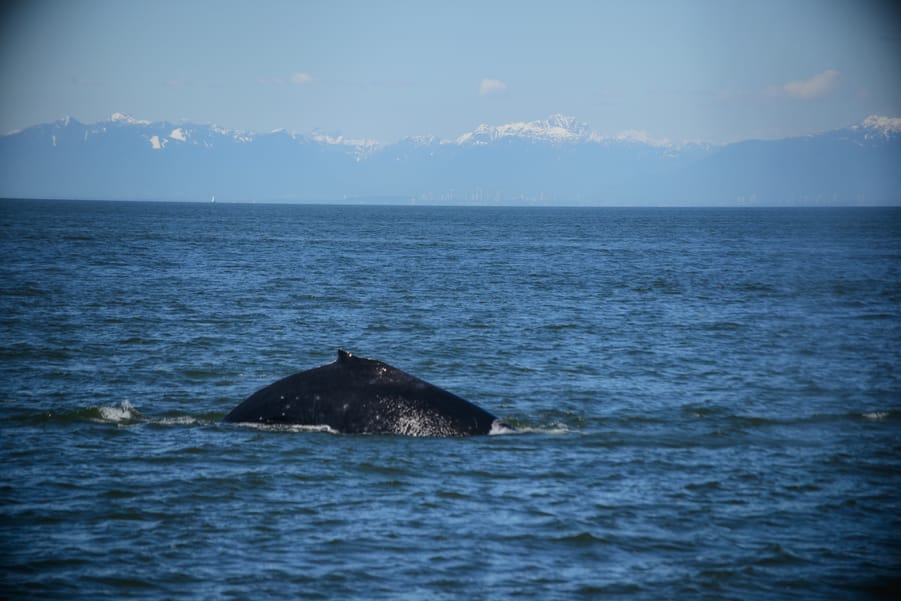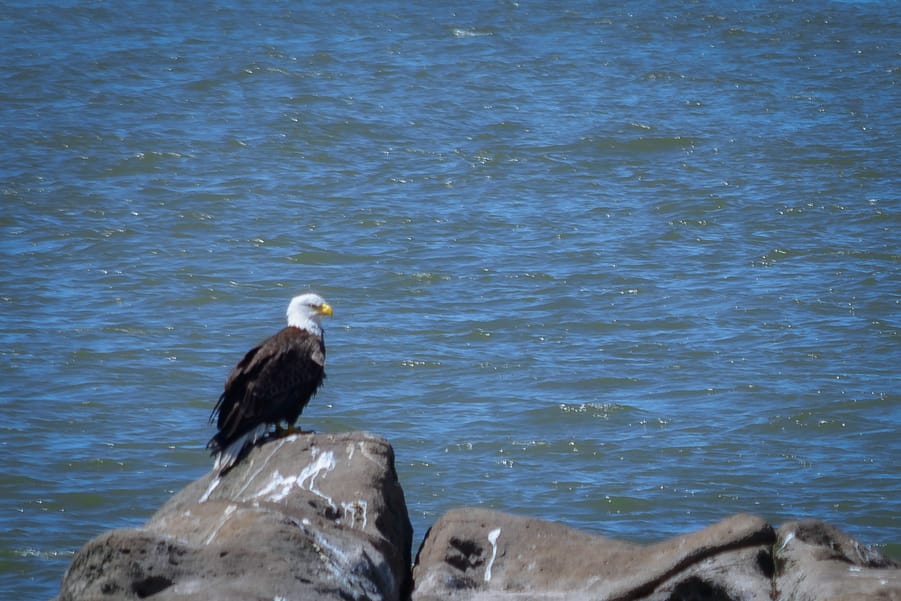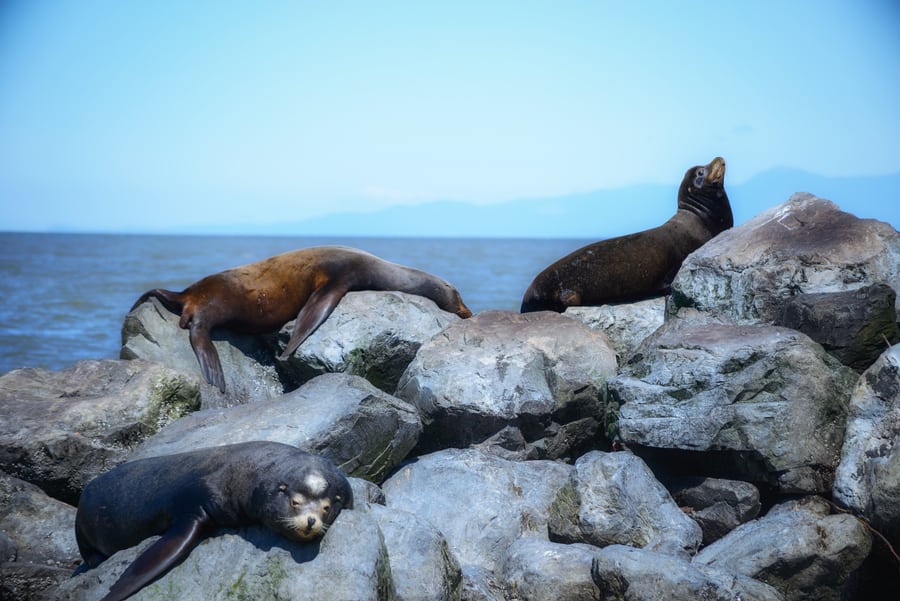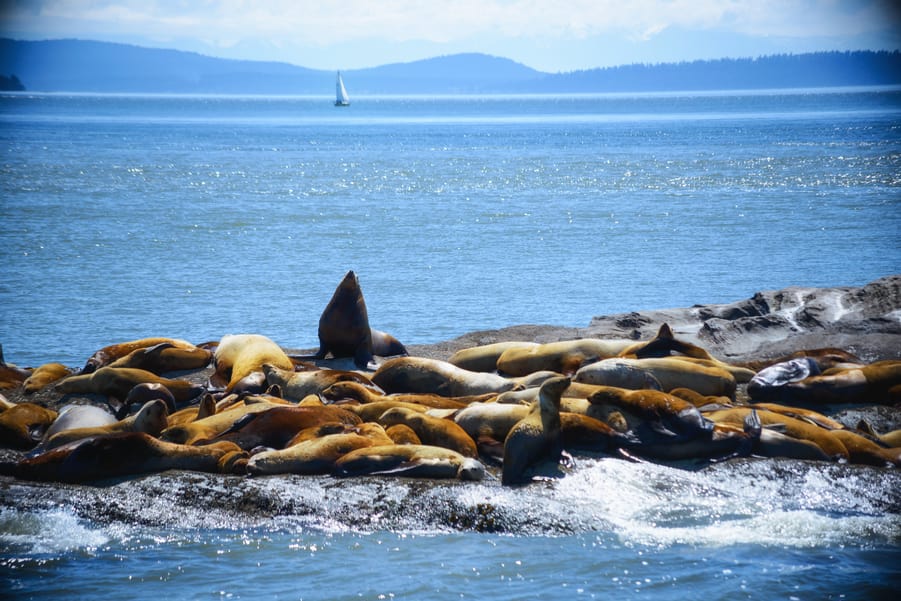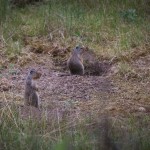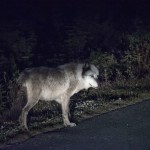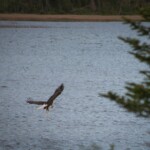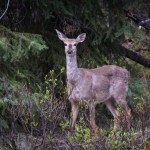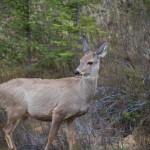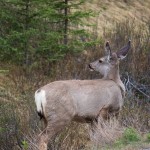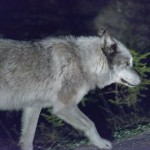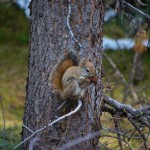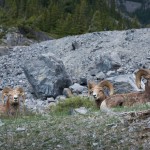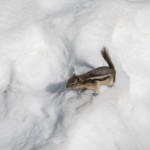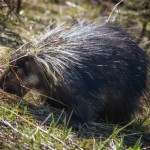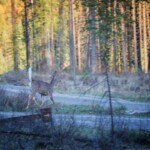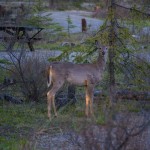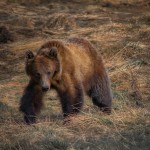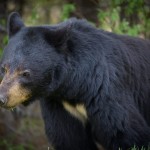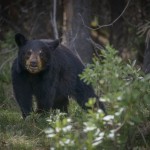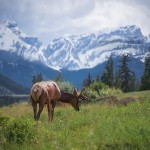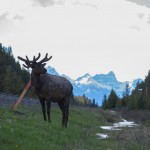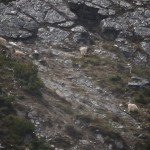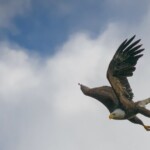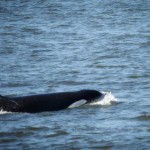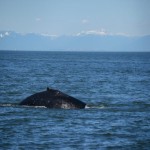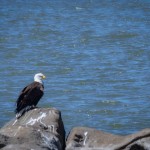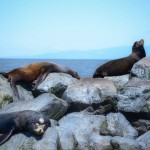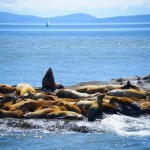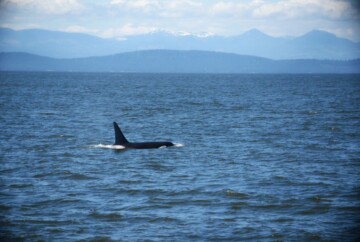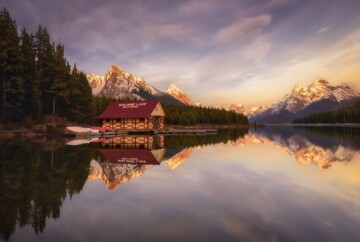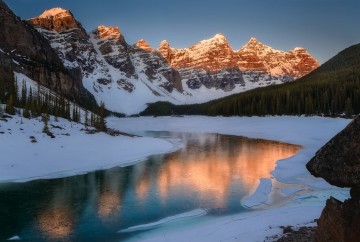If seeing animals from a new region of the planet is one of the best parts of traveling for you, you should definitely plan a trip to the Canadian Rockies.
Viewing wildlife in the Canadian Rockies is easy. We just have to know what species we can find, where they live and at what times they are usually most active.
In this article, we will tell you everything you need to know to make your trip to Canada a real safari.
We will also tell you all about how to keep the wildlife wild and protect both animals living in the Canadian Rockies and yourself.
The main thing is to have the best travel insurance in the market because although many of the animals that we find in Canada may seem harmless, others are not so and we must exercise extreme caution. Here you can check a comparison of the best travel insurance for Canada. My top choice is Heymondo.
If you’re going to travel Canada for a long time check out the best long-term travel insurance companies.
CANADIAN ROCKIES WILDLIFE
On your trip to the Canadian Rockies, you’ll find many different landscapes: high peaks covered with snow, glaciers, valleys with lakes of intense colors, canyons, and waterfalls.
Therefore, the animals that you will see will depend on where you are in the Canadian Rockies.
GRIZZLY BEARS
If there’s one animal that everyone who travels to the Canadian Rockies wants to see, it’s the grizzly bear. There are just a few areas inhabited by grizzlies in the world, and one of them is the Canadian Rockies, where this species is seriously endangered.
15% of the grizzly bear’s diet is based on meat; they feed on moose, deer, goats and even black bears … and, of course, fish. An adult grizzly bear male can reach a height of 100 inches standing on its legs and can weigh up to 1200 pounds.
The only safe way to see this animal is from a vehicle. Encounters during hikes can end tragically. Some campsites that are located in areas frequented by grizzly bears are surrounded by electrified fences to avoid encounters and possible grizzly attacks.
WHERE TO SEE GRIZZLY BEARS IN THE CANADIAN ROCKIES
There are only about 200 Grizzly bears living in the Canadian Rockies, distributed as follows:
- Yoho National Park: 11-15
- Kootenay National Park: 9-16
We only saw grizzly bears in Banff National Park (the Lake Louise area and Bow Lake surroundings).
BLACK BEARS
We can also see black bears in the Canadian Rockies. They are the most abundant bear species on the planet. Despite the name, black bears can have fur that varies from tan to dark black, but you shouldn’t confuse them with grizzly bears. Although the black bear is usually much smaller (550 pounds max) than the grizzly bear, size should not be used to determine the species of bear.
Black bears are also omnivorous, although they rarely hunt large prey. They mostly feed on insects, fish, and plants. However, their omnivorous diet can make them dangerous. Black bears can attack humans, sometimes even with deadly results. These attacks usually occur when a female with small cubs is surprised, meaning most attacks are defensive attacks instead of predatory ones.
Like grizzlies, it’s better to see this species from the safety of our car.
WHERE TO SEE BLACK BEARS IN THE CANADIAN ROCKIES
Black bears are quite abundant throughout the Canadian Rockies, so you will be able to see them easily, especially in Jasper National Park, as they prefer green meadows to high mountains.
We saw black bears in the Pyramid Lake, Maligne Road, and Miette Hot Springs areas.
Black bears are most active before and after sunset, so the best way to find them is by driving down roads such as the Icefields Parkway or Maligne Road before the sun goes down.
In this article, we tell you how to differentiate grizzly bears from black bears and, most importantly, how to avoid encounters and survive a bear attack.
MOOSE
Considering the list of animals to see in the Canadian Rockies, the moose is one of my favorites. You can’t imagine how big this animal is until you see one with your own eyes.
They can be as tall as 80 inches, not counting the antlers that can measure up to 130 inches from one end to the other. These antlers grow on the adult males during the summer, and when fall arrives, they lose them. If you travel to the Canadian Rockies in the spring, as we did, it’s possible that you’ll still see adult males with short antlers.
Despite their peaceful and harmless appearance, the National Park rangers warned us that moose are more dangerous than any other animal in the Canadian Rockies, even bears.
An encounter with a female (cow) with her calves will probably end with a sudden attack. Unlike other cervids, moose are rarely frightened, but if they feel intimidated they will not hesitate to charge and considering that they can weigh up to 1,000 pounds, they can be very dangerous. Like the other wildlife of the Canadian Rockies that we have already mentioned, the best way to observe this species is from the safety of your car.
WHERE TO SEE MOOSE IN THE CANADIAN ROCKIES
The best place to view moose in the Canadian Rockies is in humid and marshy areas, as, for example, in Jasper National Park, as it is the most remote and wild of the parks.
It was hard for us to see moose. However, two of the three moose that we saw were on Maligne Road.
The third time was on a section of the Icefields Parkway close to the Athabasca River.
WOLVES
One of the trickiest animals to see in the Canadian Rockies is the wolf. We were lucky enough to see a wolf at the end of May on the Maligne Road in Jasper National Park. However, the last sighting that the visitor center had registered was in March.
WHERE TO SEE WOLVES IN THE CANADIAN ROCKIES
Although in Jasper the current wolf population is growing, in Banff National Park it became extinct and is currently being reintroduced (there are approximately 40 wolves that spend part of the year in this park).
The chances of seeing a wild wolf in the Canadian Rockies are very slim, especially because in the warm months, the wolves move away from the populated areas. In winter it is easier to see them at lower latitudes, so you could cross paths with some on the sides of the roads.
Remember that they are nocturnal animals, so it is more likely that you find them when driving on roads like Maligne Road after sunset.
WAPITI OR ELK
The wapiti is the largest species of deer, only surpassed by moose. It is common on the West Coast of North America and is the most abundant deer in the Canadian Rockies. We certainly couldn’t leave it off our list of animals to see in the Canadian Rockies.
It can reach up to 94 inches and weigh 800 pounds. Because it’s so big, you should be cautious around the elk, especially during two periods of the year: in spring during the calving season (May – June), when the females are taking care of their new fawns, and during the fall, in the so-called rut season (September – October), when males trying to mate become very aggressive.
In this Canada Parks guide, they explain the security measures that you should take during these periods.
MULE DEER
Mule deer are also easy to see in the valleys, such as, for example the Bow Valley Parkway or on Maligne Road.
They are characterized by being on the smaller side and having long ears, grayish fur, and a black spot at the tip of the tail.
They are usually quite scared, but as with any wild animal, it is best to look at it from a distance.
WHITE-TAILED DEER
The white-tailed deer is quite similar to the mule deer in terms of morphology and size.
The best way to differentiate both species is by looking at the ears, which are smaller in white-tailed deer than in the mule deer, and especially at its tail. The white-tailed deer raises its tail when it feels intimidated and never has a black spot on its tip.
Like the mule deer, the easiest place to find it is in the lower part of valleys, such as Bow Valley Parkway or Maligne Road. However, the number of individuals of this species is lower.
MOUNTAIN GOATS
Mountain goats are the most difficult animals to photograph in the Canadian Rockies. This goat has long white fur, a goatee and two thin black horns that curve backward.
They live at a very high altitude at the top of mountains, so spotting them is quite complicated. We could see them at a point that you can find below on the map; it’s known as the “goat lookout” and is in the middle of the Icefields Parkway.
As you can see, the photo is a bit poor as the goats were very far from the road. If we regret something anything from our trip, it was not having a quality telephoto lens. We really missed many photographic opportunities, especially for photographing wildlife in the Canadian Rockies.
In addition, once back at home, we knew that for $100 we could have rented a good telephoto lens.
If you are in the USA, Lensrental is the best company for renting your camera gear. Here you can check the best camera rental companies in each country. If you book Lensrental through this link and use the code CTA15, you’ll have a 15% discount.
You can also find our Lensrentals review here.
Bighorn sheep
Bighorn sheep are common in mountainous areas, although they are also located in lower areas. After elks, they are the most numerous ungulate animals of the Canadian Rockies, so it won’t be difficult to see them.
These goats are brown, with a white rump and lining on the backs of their legs. The males are characterized by having big backward-curved horns, whereas the horns of the females are thin and short.
We saw them on the Icefields Parkway, on Abraham Lake, and on Maligne Road. Although at first glance they may seem peaceful or easily frightened, like any wild animal, if they feel intimidated, they will charge and attack.
BALD EAGLE
The bald eagle is one of the most important raptors that we can find on the West Coast of Canada. This majestic eagle stands out for the white head that all adults have.
In Jasper National Park we were able to see the national bird symbol of the United States twice.
To see them, you have to look closely at the sky or a lagoon where they could be fishing . We saw one in the Edith Lake area and another one on the Maligne Road in Jasper National Park.
porcupine
The porcupine is another animal you can see in the Canadian Rockies. This rodent covered with about 30,000 quills usually lives in forests and weighs about 11 pounds.
We saw one in the Lake Louise area in Banff National Park and as we approached, it raised its quills as a sign of threat.
Beavers
Since they are a symbol of Canada, we could not leave the Rocky Mountains without seeing beavers. This rodent with a flat, scaly tail spends much of its time in the water, so the easiest way to see them is while they swim. Beavers are known to form wooden dikes in rivers and streams, so in some areas of Canada, they have unfortunately been hunted down to near extinction because they changed river flows, damaging the activities of humans.
Finding one was very difficult since it is a nocturnal animal. Our only time was at sunset in the Cottonwood Slough near Jasper.
Squirrels
The easiest animals to see in the Canadian Rockies are squirrels. We saw two different species, the red squirrel, which stands out for being reddish and having abundant fur on its tail, and the least chipmunk, which has black and white stripes on its back
It might seem funny, but the only wildlife attack in the Canadian Rockies that we witnessed was a squirrel biting a tourist who was trying to feed it. His finger was bleeding for more than an hour.
Feeding wild animals in the Canada National Parks is illegal, dangerous, and has a very negative impact on wildlife.
Columbia ground squirrel
The Columbia ground squirrel can be found living in numerous colonies in meadows.
We saw them in large numbers at the Kicking Horse Campground in Yoho National Park and the Wapiti Campground in Jasper National Park. They are like a common squirrel except that they have a thin tail and do not climb trees. They look like marmots of tiny size.
OTHER ANIMALS IN THE CANADIAN ROCKIES
In addition to the animals mentioned above, there are other spectacular animals that we couldn’t see on our trip.
If you are lucky enough to see any of the animals on this list, do not hesitate to contact us and send us a photo; we will add it to this guide to viewing wildlife in the Canadian Rockies.
COYOTE
The coyote looks like a medium-sized dog. It has a thick tail, and its fur has a grayish-brown color.
It is a nocturnal animal that usually lives in packs. Although an individual on its own may seem harmless, in a pack, they can become dangerous.
We were told that there are many in the Vermilion Lakes and Bow Valley Parkway areas, although we did not see any.
COUGAR
The cougar or mountain lion is the largest of the felines that live in the Canadian Rockies (and the largest cat in the world capable of purring). They are found throughout the Americas, although their population has been reduced due to human activities.
Although the chances of encountering a cougar are minimal, since they are nocturnal animals that live in the high mountains, you should know that the possibility exists and that you must maintain eye contact to get away from them safely if you encounter them.
Cougars usually know to stay away from humans, but it would not be the first time someone was attacked by a cougar.
In the Canadian Rockies, the population of cougars is less than 100, of which about 70 live in Jasper National Park.
LYNX
The other feline that can be found in the Canadian Rockies is the lynx. It is quite rare to see them since they have nocturnal habits.
There is no estimate of how many lynxes live in the Rockies.
WOLVERINE
Wolverine is the largest of the weasels and weighs up to 40 pounds. This animal is in danger of extinction, so it is extremely rare to spot one.
They eat everything from plants to elk or wapitis. However, they are opportunistic eaters and tend to eat what is close and accessible. Sometimes they steal corpses from other predators. They have a very aggressive character, so they can even scare bears away. Additionally, just like skunks, they have glands next to the anus that allow them to spray their food with musk to keep other animals away and eat them later.
CARIBOU
Another animal in danger of extinction in the Rocky Mountains of Canada is the caribou. This deer is similar in size to an elk but with lighter colored hair. It is also different because both females and males have antlers with a peculiar shape.
Nowadays, there are only about 150 left in the Canadian Rockies, although seeing them is very difficult since in summer they retreat to the high peaks far from humans.
In winter and with luck, you can see them on the Maligne Road and the Icefields Parkway in the Jasper National Park area.
HOW TO AVOID ENCOUNTERS WITH WILD ANIMALS IN THE CANADIAN ROCKIES
We know that all of us here love to watch wildlife. However, not all encounters are a positive experience.
For example, if you’re hiking in a remote place and you suddenly find a cougar or a bear with their cubs, it might end up being your worst nightmare.
Follow the following tips to avoid encounters with wild animals:
- When you hike, make noise. Let the animals know that you are approaching before they can see you. There is nothing more dangerous than an animal taken by surprise. Sing, speak loudly, etc. Bear bells, although very popular, are not useful.
- Be aware of signs of recent wildlife. If you find stools, broken trunks, excavations or tracks and you think they are fresh, leave the area.
- Try to walk in groups of four or more people. Never let children or pets out of your sight.
- If you find a large dead animal (deer, elk, bear, etc.) leave the area immediately. A predator is probably close.
- Store your food properly. Try to reduce the food you are carrying as much as possible if you go trekking. Only take a snack if it is essential. Similarly, if you camp, never put food inside the tent if you do not want to have unexpected visitors at night. Food should always be stored in the car or, preferably, in food lockers.
- Avoid nocturnal or low visibility hikes. Also, if you decide to run or ride a bicycle along the park routes, bear in mind that you are taking a risk since you are more likely to take the animals that you find on the road by surprise.
HOW TO ACT DURING WILDLIFE ENCOUNTERS IN THE CANADIAN ROCKIES
However, even if you follow all the guidelines above, you may still have a wildlife encounter on your trip to the Canadian Rockies. Here are some tips to follow during encounters that will keep both you and the animals safe.
- Never feed a wild animal.An animal used to humans is a dead animal. Keep wildlife wild. Additionally,take your trash with you, so it is not accessible to wildlife. Not doing so is another way to feed them.
Bears, cougars, coyotes or wolves that usually go to populated areas or campsites in search of food are killed by park rangers because they are considered a danger to people. If you don’t want that, avoid giving wild animals access to human food.
- Never approach an animal and if the animal is the one approaching, get away. Always keep a safe distance. It is recommended to leave a 100 feet security distance for wapitis, moose, elk and goats and a distance of at least 300 feet for bears, cougars, and wolves.
- Do not corner the animal. Always leave an escape route. An animal that feels trapped is more likely to attack.
- In case of encounters with wolves, cougars or coyotes, never turn your back on them. Get away slowly without losing eye contact. Try to look as big as you can. You can place an object on your head in order to do this.
- In the case of an encounter with a bear, your reaction will depend on the type of bears and type of encounter, as we explain in this article. Having bear spray ready is always the best solution.
- Don’t run under any circumstances,as it could awaken animals’ predatory instincts.
If you come across a cougar, grizzly bear, black bear or wolf, you must report it to the park, since these species populations are being monitored and controlled. If you have an unfortunate encounter with any other type of wildlife, you should also report it.
For Banff, Yoho, and Kootenay you can call 403-762-1470 and for Jasper, you can call at 780-852-6155.
WILDLIFE MAP – WHERE TO VIEWING ANIMALS IN THE CANADIAN ROCKIES
On this map, we have pinned the places where we could see Canadian Rockies wildlife. In addition, as we discussed in the Jasper National Park article, at the reception of the Sunwapta Falls Rocky Mountain Lodge on the Icefields Parkway, there is a map where everyone can indicate sightings made in recent days. That map will be more updated than the map that we show you here, but this gives you a general idea of where to spot wildlife in the Canadian Rockies.
WILDLIFE ON THE WEST COAST OF CANADA
Finally, I wanted to mention other animals that you can see on the West Coast of Canada. We spent in Vancouver the first two days of our 15-day Canadian Rockies trip.
Seeing orcas in the wild has been my dream since I was a child and it came true during the Vancouver whale watching tour we took.
KILLER WHALES
Seeing the largest dolphin in the world while sailing the ocean is priceless. The best time to see orcas in Vancouver is from May to October since apart from the whales who live there, many transients will be crossing these waters.
HUMPBACK WHALES
Another whale that is common in Vancouver waters is the humpback whale.
BALD EAGLE
As in the Canadian Rockies, you can see bald eagles fishing in Vancouver.
CALIFORNIA SEA LIONS
California sea lions can also be seen basking in the harbor.
STELLER SEA LIONS
You can also find Steller sea lions. These are much larger than the previous ones mentioned above. They can weigh 1 ton and measure a length of 10 feet.
And with that, we end our guide to spotting wildlife in the Canadian Rockies.
